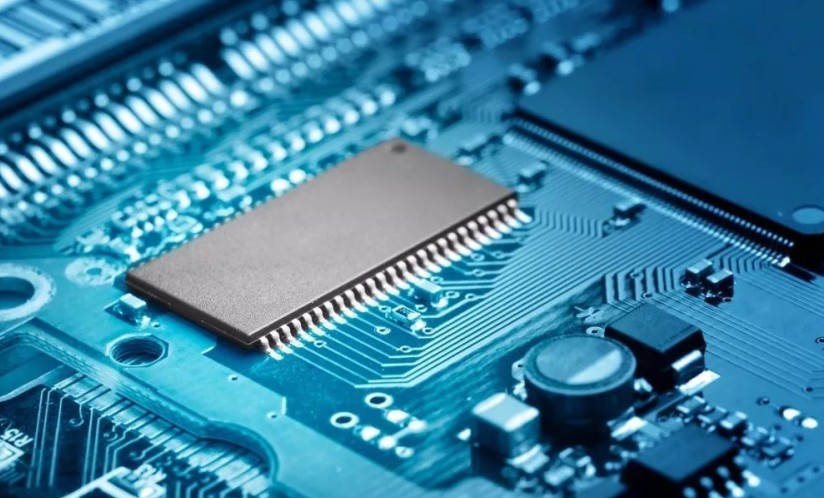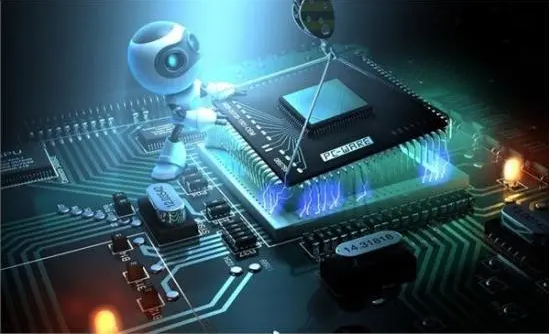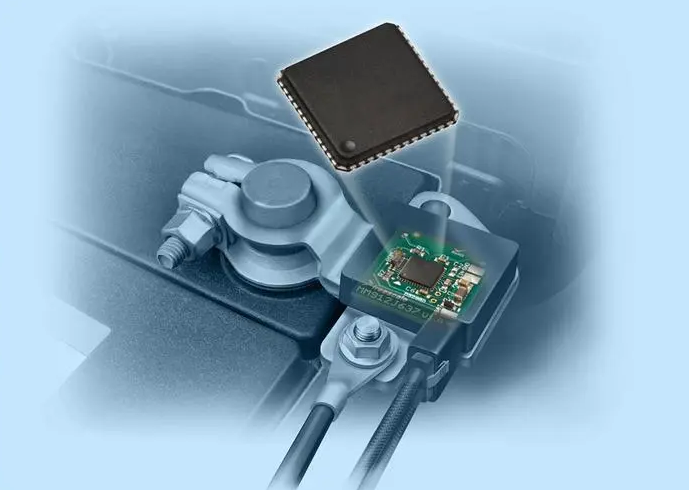By Panasonic 94
Smart Sensor Concept
Intelligent sensor is a sensor with information processing function. Smart sensors are equipped with microprocessors, which have the ability to collect, process and exchange information, and are the product of the combination of sensor integration and microprocessors. Compared with ordinary sensors, smart sensors have the following three advantages: high-precision information collection can be realized through software technology, and the cost is low; it has certain programming automation capabilities; and its functions are diversified.

A good 'smart sensor' is a microprocessor-driven sensor and instrumentation package with features such as communications and on-board diagnostics.
Smart sensors can store various physical quantities detected, and process these data according to instructions, thereby creating new data. Smart sensors can communicate with each other, and can determine the data that should be transmitted, discard abnormal data, and complete analysis and statistical calculations.
Smart Sensor Capabilities
In summary, the main functions of smart sensors are:
(1) It has the functions of self-calibration, self-calibration and self-calibration;
(2) It has two-way communication, standardized digital output or symbol output function;
(3) With automatic compensation function;
(4) It has the functions of data storage, memory and information processing;
(5) It can automatically collect data and preprocess the data;
(6) It has the functions of judging and decision-making;
(7) Capable of automatic inspection, self-selection of range, and self-finding of faults.
Features of Smart Sensors
The intelligent sensor is a computer detection system with a microprocessor as the core and expanded peripheral components. Compared with ordinary sensors, smart sensors have the following salient features:
1. Contributed to the multifunctionality of the sensor
The intelligent sensor can realize multi-sensor and multi-parameter comprehensive measurement, and expand the measurement and use range through programming; it has a certain self-adaptive ability, and changes the form of range reverse output data correspondingly according to the change of the detection object or conditions; it has the function of digital communication interface , directly sent to a remote computer for processing; it has a variety of data output forms (such as Rs232 serial batch input, PIO parallel output, IEE-488 bus output, and analog output after D/A conversion, etc.), adapting to various kind of application system.
2. Improve the reliability of the sensor
The miniaturization of the integrated sensor system eliminates some unreliable factors of the traditional structure and improves the anti-jamming performance of the whole system; at the same time, it also has the functions of diagnosis, calibration and data storage (for intelligent structure systems, there is also an adaptive function), with good stability.
3. Improved the accuracy of the sensor
The intelligent sensor has the function of information processing. Through the software, it can not only correct various deterministic system errors (such as the nonlinear error of sensor input and output, service degree error, zero point error, positive and negative stroke error, etc.), but also properly compensate for random errors. error, reduce noise, and greatly improve sensor accuracy.
4. Improve the performance-price ratio of the sensor
Under the requirement of the same accuracy, compared with single-function ordinary sensors, multi-functional intelligent sensors have significantly improved performance-price ratio, especially after adopting a cheaper single-chip microcomputer.

Applications of Smart Sensors
Smart sensors have been widely used in various fields such as aerospace, aviation, national defense, science and technology, and industrial and agricultural production. For example, it has broad application prospects in the field of robotics. Smart sensors enable robots to have human-like facial features and brain functions, which can perceive various phenomena and complete various actions.
Application in smart agriculture:
The majority of agricultural projects are carried out in the field due to the unique nature of the environment, making correction operations very inconvenient and labor costs extremely high. As a result, there are very strict requirements for the stability of sensor data, and the smart sensor is the most efficient sensor.
Application in Robot:
Robots of today now possess limbs and sensory abilities that are similar to those of humans, as well as some level of intellect and adaptable action plans. They are capable of operating without human intervention. The role of sensors in all of this is evident. Robots need sensors to perceive their surroundings. helper.
Application in smart home appliances:
Future households will be heavily influenced by the smart home trend, and smart home appliances will become standard items for many households. Future home products like TV dramas, fans, air conditioners, washing machines, laundry dryers, refrigerators, wardrobes, etc. could all use smart sensors. It serves as the fundamental tool for establishing communication between individuals and home equipment and serves as the cornerstone of the domestic Internet of Things.
In the medical field, diabetic patients need to keep track of blood sugar levels in order to adjust diet and inject insulin to prevent other complications. Usually when measuring blood sugar, you must prick your finger to collect blood, then put the blood sample on the glucose test paper, and finally put the test paper on the electronic blood glucose meter for measurement. This is a cumbersome and painful method. The "glucose watch", which looks like an ordinary watch, can realize painless, bloodless and continuous blood sugar testing by wearing it. There is a pad coated with a reagent on the "glucose watch". When the pad is in contact with the skin, glucose molecules are adsorbed to the pad and electrochemically react with the reagent to generate an electric current. The sensor measures the current, and the processor calculates the blood sugar concentration corresponding to the current, and displays it in digital quantity.
In industrial production, some product quality indicators (such as viscosity, hardness, surface finish, composition, color and taste, etc.) cannot be quickly and directly measured and controlled online by using traditional sensors. Using intelligent sensors can directly measure certain quantities in the production process (such as temperature, pressure, flow, etc.) the quality of.

Four shortcomings of the development of Chinese smart sensor industry
01, Lack of high-end talents
The money, technology, and industrial base are relatively shaky because the sensor sector is still in its early stages of development. It also involves numerous disciplines, necessitates a broad variety of knowledge, and sees the constant emergence of new technologies, making it challenging to recruit top personnel. The lack of talent in the sector is also a result of my nation's ineffective and inappropriate talent training system.
02, The key technology has not yet broken through
It is exceedingly challenging to overcome the many disciplines, theories, materials, and process knowledge that go into sensor design technology. Due to a talent shortage, expensive research and development expenses, and intense enterprise competition, my country has not yet made significant advancements in some common critical sensor technologies.
03, Resources are not concentrated
More than 1,600 sensor businesses exist in my nation at the moment, but the majority of them are small and micro businesses with low profitability and a lack of technology-driven leading businesses, which eventually results in the realization of capital, technology, enterprise design, industrial structure, market, and other aspects. Resources cannot be efficiently concentrated under a decentralized state, and industrial progress has taken a long time to advance.
04, Insufficient capacity for industrialization
Because Chinese companies lack advanced technical capabilities and the formation of industry norms has not yet taken place, domestic sensor products are not matched and do not form a series, repeated manufacturing, ruthless rivalry, and industrialisation result from this. It can only rely on imports for a considerable amount of time because the degree is not proportionate to the variety and series.
As a wide range of system front-end sensing devices, smart sensors can not only promote the upgrading of traditional industries, such as the upgrading of traditional industries, the intelligent upgrading of traditional home appliances, but also promote innovative applications, such as robots, VR/AR (virtual reality /augmented reality), drones, smart home, smart medical care and elderly care and other fields.
In the industrial field, traditional enterprises are facing problems such as rising labor costs and declining market demand. Traditional enterprises have begun to shift from labor-intensive to automation and intelligence. Throughout the transformation, smart sensors play a vital role in promoting the transformation and upgrading of traditional industries.
In 2015, my country's sensor market reached 110 billion yuan, and it is expected to reach 211.5 billion yuan by 2020, with a compound annual growth rate of 14%. However, due to the gaps in the technical level, production process, scale and profitability of domestic sensor companies, the domestic sensor market is highly dependent on imports. Especially in terms of high-end sensors, due to the variety, high level of interdisciplinary research and development technology, and high development costs, companies are unwilling to bear development risks, resulting in my country's high-end sensors basically relying on imports. In 2015, the proportion of my country's mid-to-high-end sensor imports reached 80%.
Intelligent sensing technology is the leading technology of intelligent manufacturing and the Internet of Things. As a front-end perception tool, it is of great significance.